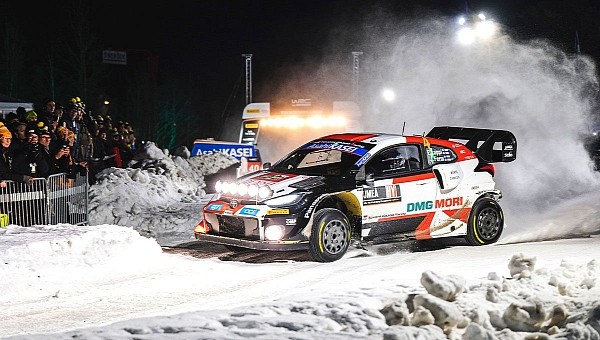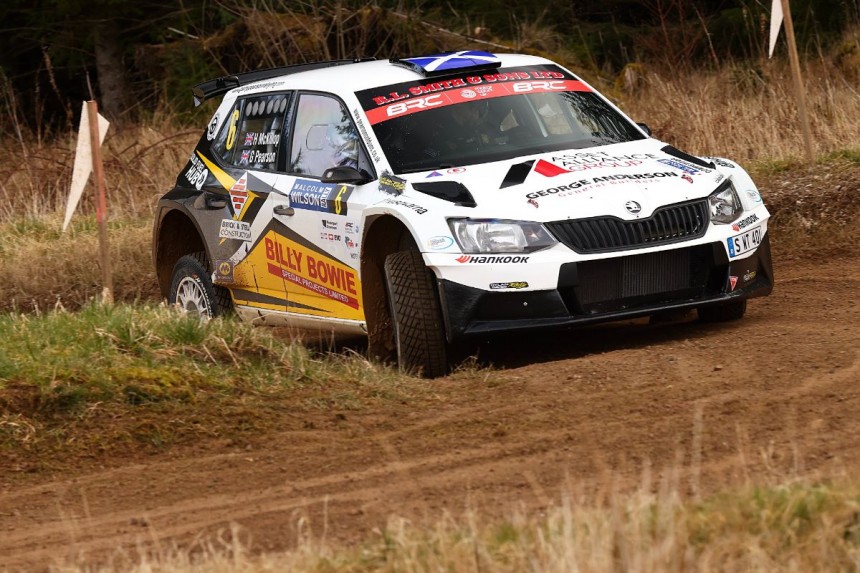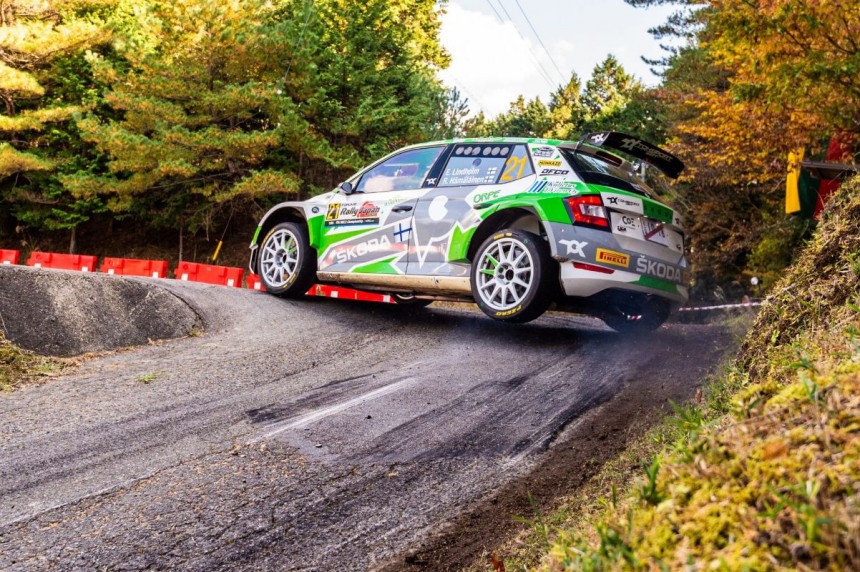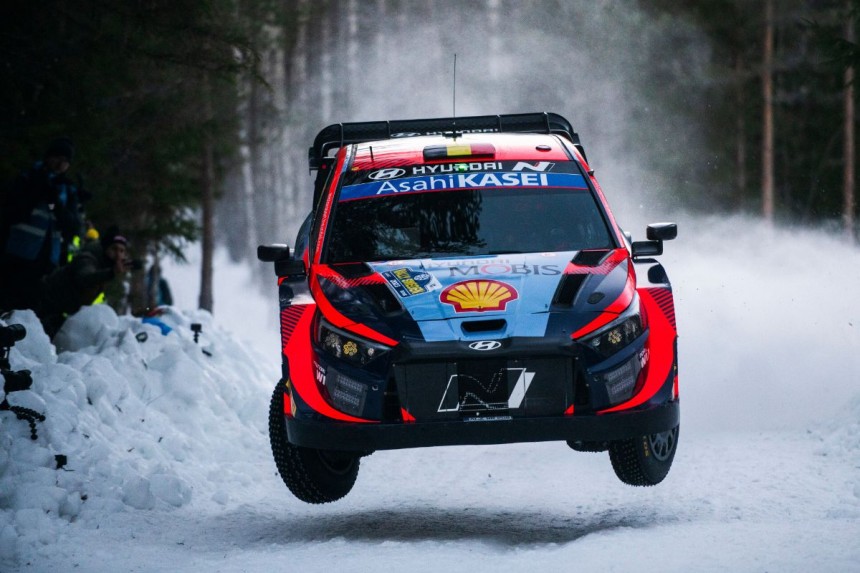In the world of motorsport, there is a multitude of different types of racing and levels within each discipline. However, a lot of them have an easy-to-understand hierarchy.
For example, Formula cars have Formula Four, Three, Two, and One, so it's quite easy to understand. Unfortunately, rallying hasn't been quite so straightforward. One of the other considerations when it comes to drivers moving from one level to another is their safety and making sure they are prepared for the increased speeds and dynamic performances.
In the Formula world, the progression is gradual to more horsepower, more downforce, and less weight. With rallying, it has been very different, starting off with low horsepower and two-wheel drive vehicles in the Junior WRC, then jumping to high horsepower all-wheel drive cars in WRC 2, followed by a jump to the pinnacle of the rally, very high horsepower, torque, downforce, top-level WRC (World Rally Championship) cars. Because of this, young drivers struggle to compete when they jump up a level, the most difficult being the jump from WRC 2 to the top category.
They have a hard time trusting and understanding the downforce of the WRC cars, which is one of their most significant competitive factors. Because of all of this, the FIA has devised a new simplified class structure that they are calling the rally car pyramid. They have also added two new classes of cars to help make it easier for young rising stars to work up their way through the levels and fill in the performance gaps between categories. Those new classes are Rally 5 through Rally 1.
Rally 5 is at the base of the pyramid when we are talking about price and performance. The main principle of this class is simplicity and low cost, keeping it simple to drive and maintain. The first defining requirement of the Rally 5 vehicle is that it needs to be two-wheel drive, with the majority of them being front-wheel drive, because it is a very good platform to learn the basics of driving a rally car.
The second notable aspect of these vehicles is the weight-to-power ratio of six kg (13 lb) per horsepower. In order to achieve that, cars are required to be fitted with a 1.3-liter turbocharged power unit or a 1.6-liter naturally aspirated engine, and they must weigh no less than 1,080 kg (2,380 lb). A price cap exists as well and is set at €40,000 ($43,000).
Rally 4 is the next step in the pyramid. The regulations for Rally 4 are based on the ones that FIA had for Junior WRC, which had been used for many years. This category is made up of cars like the Ford Fiesta, Peugeot 208, and Opel Corsa and represents a small step up from Rally 5. The fourth class is considered a high-performance two-wheel drive vehicle with the engine size being roughly the same. Only the naturally aspirated power unit is allowed to be up to two liters. The weight-to-power ratio is lower at 5.1 kg (11 lb) per horsepower.
The biggest difference is that teams are allowed to make modifications to the cars. They maintain the looks and size of road vehicles on the outside, but underneath, the Rally 4 is a proper race car. They are allowed to be fitted with sequential gearboxes for quicker and easier shifts. The engines can be tuned up to 210 hp (213 PS). All cars must be equipped with a 30-millimeter turbo restrictor regardless of engine size. Besides, they must all maintain the same size brake discs and wheels and weigh a minimum of 1,080 kg ( 2,380 lb). The price for Rally 4 is capped at €70,000 ($75,000), and there is also a price cap on parts.
Rally 3 is the newest class that has been added to the pyramid. These vehicles are the perfect bridge between Junior WRC and WRC 2 cars that have been needed for a long time. Before Rally 3, the jump from a two-wheel drive 210 hp car to a four-wheel drive 290 hp (294 PS) was a very steep learning curve. These vehicles are basically the Rally 4 car with four-wheel drive. Additionally, Rally 3 cars have the second category rear wing.
Rally 2 is replacing the old WRC 2 category. Since the introduction of these cars in 2013, they have been widely popular, with more than 1,100 sold by seven different manufacturers. These are very high performance compared to the last three cars we've presented. The vehicle the teams start with is essentially the same but modified in many different ways.
The chassis is modified to incorporate the transmission tunnel. The wheel arches are substantially wider, and the engine can be modified to increase the power to 290 hp. While much of the car is changed with high-performance parts and materials, the four-wheel drive system is actually simplified with the lack of a center differential. Given the increased performance, safety is improved as well. The doors must be fitted with at least 60 liters of high-density foam to help absorb energy in case of a lateral impact, and the seats must be made to a higher safety standard.
Rally 1, the pinnacle of the WRC, is packed with technology and even more power than its predecessor. Since 2016, top-level rally cars have featured spectacular aerodynamics that added another element to the already extreme performance of the vehicles. They scaled back quite a bit on the aero part in 2022, but power and technology have made quite the jump with the introduction of the new hybrid power unit.
The 1.6-liter turbo engine is similar to the previous generation and produces 380 hp (385 PS). The hybrid system boosts the power to over 500 hp (507 PS) at specific points throughout the rally stage. The Rally 1 vehicles also feature an MGUK similar to F1 that recuperates kinetic energy to increase power in the rally stages and enable full electric mode in urban areas on transits between locations.
Another step back from the 2016 car is the removal of the center differential. The four-wheel drive system is basically locked front to back like a four-wheel drive truck. Also new in 2022 is the safety cell, which came as a result of research projects undertaken by the FIA. The safety cells have all been standardized throughout all of the cars, and teams will build the exterior body panels around the space frame. The Rally 1 weighs in at 1,190 kg (2,600 lb) and is required to have a power-to-weight ratio of 3.1 kg (6.8 lb).
While some rally fans aren't happy about the new hybrid direction of WRC, they are spectacular. When you look at the power and torque advantages and the fact that fans will still hear the fantastic sounds of a WRC engine, it's hard not to like them.
In the Formula world, the progression is gradual to more horsepower, more downforce, and less weight. With rallying, it has been very different, starting off with low horsepower and two-wheel drive vehicles in the Junior WRC, then jumping to high horsepower all-wheel drive cars in WRC 2, followed by a jump to the pinnacle of the rally, very high horsepower, torque, downforce, top-level WRC (World Rally Championship) cars. Because of this, young drivers struggle to compete when they jump up a level, the most difficult being the jump from WRC 2 to the top category.
They have a hard time trusting and understanding the downforce of the WRC cars, which is one of their most significant competitive factors. Because of all of this, the FIA has devised a new simplified class structure that they are calling the rally car pyramid. They have also added two new classes of cars to help make it easier for young rising stars to work up their way through the levels and fill in the performance gaps between categories. Those new classes are Rally 5 through Rally 1.
Rally 5 is at the base of the pyramid when we are talking about price and performance. The main principle of this class is simplicity and low cost, keeping it simple to drive and maintain. The first defining requirement of the Rally 5 vehicle is that it needs to be two-wheel drive, with the majority of them being front-wheel drive, because it is a very good platform to learn the basics of driving a rally car.
Rally 4 is the next step in the pyramid. The regulations for Rally 4 are based on the ones that FIA had for Junior WRC, which had been used for many years. This category is made up of cars like the Ford Fiesta, Peugeot 208, and Opel Corsa and represents a small step up from Rally 5. The fourth class is considered a high-performance two-wheel drive vehicle with the engine size being roughly the same. Only the naturally aspirated power unit is allowed to be up to two liters. The weight-to-power ratio is lower at 5.1 kg (11 lb) per horsepower.
The biggest difference is that teams are allowed to make modifications to the cars. They maintain the looks and size of road vehicles on the outside, but underneath, the Rally 4 is a proper race car. They are allowed to be fitted with sequential gearboxes for quicker and easier shifts. The engines can be tuned up to 210 hp (213 PS). All cars must be equipped with a 30-millimeter turbo restrictor regardless of engine size. Besides, they must all maintain the same size brake discs and wheels and weigh a minimum of 1,080 kg ( 2,380 lb). The price for Rally 4 is capped at €70,000 ($75,000), and there is also a price cap on parts.
Rally 3 is the newest class that has been added to the pyramid. These vehicles are the perfect bridge between Junior WRC and WRC 2 cars that have been needed for a long time. Before Rally 3, the jump from a two-wheel drive 210 hp car to a four-wheel drive 290 hp (294 PS) was a very steep learning curve. These vehicles are basically the Rally 4 car with four-wheel drive. Additionally, Rally 3 cars have the second category rear wing.
The chassis is modified to incorporate the transmission tunnel. The wheel arches are substantially wider, and the engine can be modified to increase the power to 290 hp. While much of the car is changed with high-performance parts and materials, the four-wheel drive system is actually simplified with the lack of a center differential. Given the increased performance, safety is improved as well. The doors must be fitted with at least 60 liters of high-density foam to help absorb energy in case of a lateral impact, and the seats must be made to a higher safety standard.
Rally 1, the pinnacle of the WRC, is packed with technology and even more power than its predecessor. Since 2016, top-level rally cars have featured spectacular aerodynamics that added another element to the already extreme performance of the vehicles. They scaled back quite a bit on the aero part in 2022, but power and technology have made quite the jump with the introduction of the new hybrid power unit.
The 1.6-liter turbo engine is similar to the previous generation and produces 380 hp (385 PS). The hybrid system boosts the power to over 500 hp (507 PS) at specific points throughout the rally stage. The Rally 1 vehicles also feature an MGUK similar to F1 that recuperates kinetic energy to increase power in the rally stages and enable full electric mode in urban areas on transits between locations.
While some rally fans aren't happy about the new hybrid direction of WRC, they are spectacular. When you look at the power and torque advantages and the fact that fans will still hear the fantastic sounds of a WRC engine, it's hard not to like them.
















